Chaozhou opera is one of the ten major operas in China. It originated from a branch of Southern Drama in the Song and Yuan Dynasties, and formed in the Ming Dynasty. Historical data compiled after the liberation show that there are more than 1,000 traditional plays. Chaozhou opera is a local opera in Chaoshan area, which is one of the three major local operas in Guangdong and one of the ten major operas in China. It has a history of over 500 years. Chaozhou opera is an amazing art form in China, enjoying high reputation and popularity both at home and abroad. It features graceful and lyrical tunes, demonstrates Chaoshan local characteristics, and appeals to both refined and popular tastes. There are a lot of excellent plays staged by famous performers in unique performing arts. Chaozhou opera is well received by the mass. A number of Chaozhou operas were made into movies and issued at home and abroad. Chaozhou opera troupes have been invited to perform across China and the world for many times. The performance art of the role of Chou is especially enjoyable.

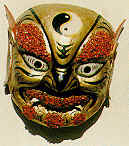

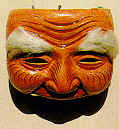
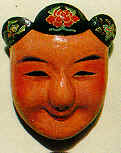
The charms of Chaozhou opera are its crystal clear arias and exquisite tunes, which appeal to people in East Guangdong, South Fujian and countries in Southeast Asia.
The arias of Chaozhou opera include Tune, Dual Tune and Minor Tune.
Assistant chanting is one of the characteristics of the arias of Chaozhou opera.
Musical instruments used for Chaozhou opera include two-stringed fiddle, Yehu (two-stringed fiddle with coconut body), flute, drum, Shenbo (a deep, flat gong), gong and so on.
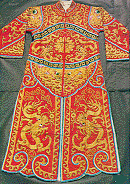


In ancient times, Chaozhou opera had 7 roles, namely, the roles of Shen, Dan, Jing, Mo, Chou, Wai and Tie. Today, these roles have further developed into 10 types of Chou roles, 7 types of Dan roles, 5 types of Shen roles and 3 types of Jing roles. The most famous roles in Chaozhou opera are the so-called "Triple Xiaos", including Xiaosheng (a young male character), Xiaodan (a young female character) and Xiaochou (a young clown character), which are collectively called the "Flowers of South China".
The everlasting Chaozhou opera is not only an amazing art form in Chaoshan culture, but also the essence of Chaoshan folk arts.
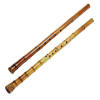




The primitive and elegant Chaozhou music is a local music system formed as a result of interaction between ancient central Chinese music and Chaoshan folk melodies. It is characterized with enrich, exuberant and complete tunes. Its performance forms include chord music, refined music, temple music, ancient flute music, as well as gong and drum music. There are over 1,000 Chaozhou music varieties, which are highly appreciated both at home and abroad.
Chaozhou music is primitive and elegant. It dates back to the Tang and Song Dynasties. Originating from ancient Chinese music in the Tang and Song Dynasties, Chaozhou music also inherits and absorbs local folk melodies and such music varieties as "Zhengzi", "Kunqiang", "Xiqing" and "Waijiang". In the mid Ming Dynasty, Chaozhou music had become a systematic folk music art form with rich contents and diverse performances.





Chaozhou music is written in Ersipu notation, Gongchi notation and simplified notation. The Ersipu notation is the oldest notation style of Chaozhou music and a rare music notation in China. Study on the Ersipu notation and the special rhythms of Chaozhou music reveal the influences of Tang and Song music culture on Chaozhou music.
Chaozhou music can be played in various forms and with various musical instruments, which make it an art form appealing to both refined and popular tastes. Chaozhou music has 5 basic tunes, namely, the light-six tune, heavy-six tune, active-five tune, reverse tune, and light-three-and-heavy-six tune. The most prominent musical instruments are two-stringed fiddles and percussion instruments. Two-stringed fiddles are the leading instruments in most Chaozhou music performances, except for those featuring gongs and drums music.
Chaozhou music features flexible and diverse performance forms. It can be a performance involving dozens of or hundreds of players of gongs and drums, or a string music performance staging by only 2 to 5 performers. So Chaozhou music is an art form for refined taste, popular taste and self entertainment at the same time, demonstrating strong vitality and attractiveness.
The Chaozhou Drum Performance was awarded the Gold Prize in the World Youth Union Party. Yingge dance is a folk dancing art popular in the Chaozhou area in East Guangdong. It is an expressive Han dance performed by 107 male dancers in legendary colorful costumes on the plaza. It is called the "Root of Chinese National Dance". Yingge dance is a prevailing art form in Chaoyang. In November 1996, Chaoyang City was awarded the title of "Village of Chinese Folk Art (Yingge Dance)" by the Ministry of Culture of China. In 1956 and 1988, the Yingge Dancing Team performed in Beijing and amazed the audience. In 2005, the Chaozhou opera titled the Appointing of Grand Councilor by the Six Kingdoms was awarded the Shanhua Prize in the 7th Chinese Folk Art Awards, and the opera named Dongwu Princess won six First Prizes in the 9th Guangdong Art Festival. Chaozhou opera, Chaozhou music, Yingge dance and paper–cutting art are on the first list of "National Intangible Cultural Heritages". In the Lantern Festival Party on CCTV in 2006, the amazing performance of Shantou Chaozhou Drum Art Troupe demonstrated the unique charms of Chaoshan culture to audience from China and the world.
Source: Shantou Almanac 2008, Shantou Municipal Bureau of Culture, Radio, TV, Press and Publication
潮剧潮乐
潮剧是中国十大戏曲剧种之一,源于宋元南戏的一支,形成于明代,解放后发掘整理的传统剧目1000多个。潮剧是潮汕的地方戏,也是广东三大地方剧种之一,全国十大剧种之一,距今已有500多年历史。潮剧也被称为中国艺苑奇葩,获得海内外广泛好评。其突出特点是:优美抒情,潮汕味浓,雅俗共赏。有大批优秀剧目,独特表演艺术和著名演员,深受群众喜爱,多部潮剧拍成电影传遍国内海外,潮剧团也多次赴国内各地和海外演出,尤其是丑戏的表演艺术更是脍炙人口。
独具韵味的潮剧唱腔清丽,做工细腻,深受人们喜爱,流行于粤东、闽南及东南亚各国。
潮剧的唱腔,包括曲牌、对偶曲和小调。
潮剧唱腔有一个特点:就是帮唱。
潮剧音乐的特色乐器有二弦、椰胡、大笛、大鼓、深波、曲锣等。
潮剧的角色行当古时分为生、旦、净、未、丑、外、贴等7角,现发展成为10种丑 、7种旦、5种生和3种净。其中,以“三小”(小生、小旦、小丑)知名,有“南国鲜花”之称。
这便是流芳百世的潮剧──潮汕文化的奇葩,也是潮汕民间艺术的精髓。
古朴典雅的潮州音乐,是中原古乐与潮汕民间曲调长期渗透融合形成的地方音乐体系,色彩浓郁、丰富、完整。演奏形式包括弦诗乐、细乐、庙堂乐、笛套古乐、锣鼓乐等,有潮乐弦诗曲牌千首以上,在国内外享有盛誉。
潮州音乐古朴、典雅,其源可以追溯至唐、宋时代,潮州音乐既源于唐、宋中原古乐,又承袭融汇了“正字”、“昆腔”、“西秦”、“外江”诸剧种及地方民间乐调。至明代中叶潮州音乐已形成一种曲目丰富、形式多样、自成体系的民间音乐艺术。
潮州音乐传谱,用“二四谱”、“工尺谱”以及简谱。 其中“二四谱”系潮州音乐最古老谱式,也是中国稀有的乐谱。从“二四谱”及潮州音乐特殊音律进行研究,均可见唐、宋音乐文化对潮州音乐的影响。
潮州音乐的演奏方式和乐器组合种类多样,是一种雅俗共赏的群众性民间艺术形式。潮乐的基本调式有五种,即:轻六调、重六调、活五调、反线调、轻三重六调。最具特色的乐器是二弦和打击乐。在演奏上除锣鼓乐外,都由二弦领奏和指挥。
演出形式,灵活多样,有几十人以至上百人的大锣鼓演奏,也有二五人组成的弦乐演奏,是雅俗共赏,群众性白娱自乐的艺术形式,具有强大生命力和吸引力。
潮州大锣鼓曾获得世界青年联欢节金奖。英歌舞是粤东潮汕地区流传的一种民间舞蹈艺术,属汉族广场情绪舞蹈,是由107位身着传奇色彩服装的男子组成的民间舞蹈,被誉为“中国民族舞蹈的根”。潮阳是英歌舞最为盛行的区。1996年11月,潮阳市被国家文化部授予“中国民间艺术(英歌艺术)之乡”的称号。1956、1988年曾两度赴北京进行表演,反响很大。2005年,潮剧《六国封相》获第七届中国民间文艺山花奖;潮剧《东吴郡主》在第九届省艺术节上获6个一等奖。潮剧、潮州音乐、英歌舞、剪纸进入第一批“国家级非物质文化遗产”。2006年中央电视台元宵晚会上,汕头市潮汕大锣鼓艺术团以近乎完美的表演,向全国和全世界观众展示了潮汕文化的独特魅力。
信息来源:《汕头年鉴2008》、市文化广电新闻出版局